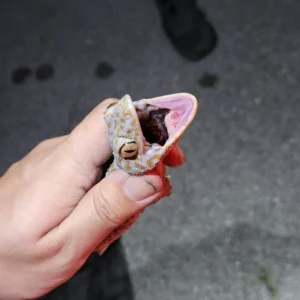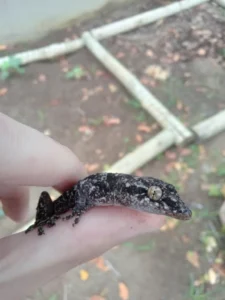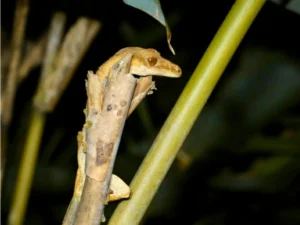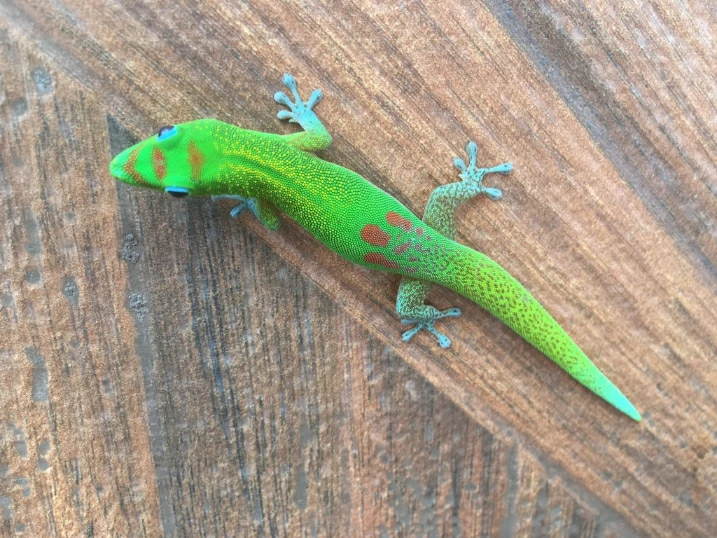Geckos are really interesting little animals. If you’ve ever seen one climbing your window or sitting under a warm light, you might have noticed something surprising: their throats can sometimes look reddish. So, why do geckos have red throats?
Some geckos have red throats as part of communication and mating displays. The bright red comes from color cells in their skin and sometimes extra blood flow. This helps them show they’re in charge, attract a mate, or warn others. Not all gecko species have red throats, and how bright it gets or when it shows up changes depending on the species, their age, and the situation.
Basically, a gecko shows its red throat when it wants to say something; “I’m in charge,” “this is my space,” or “I’m ready to mate.” It’s nature’s way of letting them talk without making a sound.
How the Red Throat Works as a Visual Signal
Geckos are mostly quiet animals. They don’t croak loudly like frogs or toads. Instead, they rely on what they show with their bodies, and the red throat works perfectly.
By puffing out their throat and showing bright red skin, geckos can tell others a lot about themselves.
For example, a male gecko may show his red throat when another male comes too close, almost like saying, “Hey, this is my spot, back off.”

That usually stops a fight before it even starts, which keeps the gecko from getting hurt. Females notice the red throat too, brighter red usually means a healthier male or one more likely to be a good mate.
Not all red throats are the same. Some geckos have deep crimson that only shows when they puff their throat, while others have lighter red that’s visible even when relaxed.
This difference helps geckos quickly judge each other in different situations.
Why Do Only Some Geckos Have Red Throats?
You might wonder why some geckos have bright red throats while others don’t. It depends on the species, where they live, and what they need to show.
Geckos that are active during the day often show more color because it’s easier to see. Geckos that are active at night don’t need bright throats as much, because it’s harder to see in the dark.
Age matters too. Younger geckos usually don’t show a red throat until they’re grown.
And males usually show it more brightly than females because it’s tied to mating and showing dominance.
How the Color Actually Forms
Here’s the cool part. The red throat comes from a mix of things. First, there are color cells in the skin called chromatophores (red and yellow cells) that make the red color.
Extra blood flow in the throat can make the red look brighter, especially when the gecko puffs its throat. So it’s a mix: color cells plus more blood showing through thinner skin in that area.

When the gecko relaxes, the color cells shrink and the blood slows, so the red fades and blends in with the rest of the body
The gecko can control when to show the red throat, which keeps it meaningful.
How Red Throats Help With Dominance
Red throats are a big help when a gecko wants to show it’s in charge. Picture a male gecko spotting another male near his favorite hunting spot.
Instead of risking a fight, he puffs his throat, shows the red patch, and stands tall.
This usually works really well. Many rivals back down just from seeing the bright red display. It avoids injuries and wasted energy.
In some species, the size or brightness of the patch also matters: bigger or brighter usually means a stronger male.
These displays aren’t just about fighting, they’re also about respect. Neighboring geckos can recognize each other and know which males hold territory.
How Red Throats Help Attract Mates
The red throat isn’t just for other males. It’s also a signal for females. Bright colors in animals usually hint at health, energy, or good genes, and geckos are no different.
During breeding season, a male may puff his throat over and over to show he’s strong and ready. Females may come closer or give subtle body signals.
Sometimes males compete for attention, and the one with the brightest throat usually wins.
Not all gecko species use red throats for mating. Some rely on smell, vibrations, or other body movements instead. The red throat is just one tool they use.
How Red Throats Can Serve as Warnings
Beyond mating and dominance, the red throat can also warn others. Some geckos use the color to look bigger or scarier to predators or rivals.
It doesn’t mean the gecko is poisonous or dangerous, but the sudden flash of red can startle an animal, giving the gecko a chance to escape.
For example, if a gecko senses danger, it may puff its throat and show the red patch. The contrast makes it look bigger and easier to see.
This works well with predators that rely on sight, like birds or bigger lizards.
Not every gecko uses the red throat this way. Some rely on hiding or running instead. The bright red display is just one part of their defense.
Do Female Geckos Ever Show Red Throats?
You might wonder, do female geckos show red throats too? The answer is yes, but usually it’s much less dramatic than males.
In most species, the red throat is mainly a male feature for mating and showing dominance.

Females may show a faint red patch if they’re stressed or defending a small area, but it’s often very subtle. This difference helps keep roles clear without constant conflict.
Sometimes female throat color can hint at health or readiness to breed, but that’s rare.
How Environment and Mood Affect the Display
How a gecko shows its red throat also depends on the environment. Temperature, light, and background colors all affect how bright it looks.
For example, in bright sunlight the red throat looks much more intense than in dim light. In areas with lots of plants, a gecko might puff its throat more to stand out.
Since geckos are cold-blooded, cooler temperatures can slow how much color change they get because their body processes slow down.
Mood matters too. A stressed or scared gecko may hide its throat completely until it feels safe. These displays are flexible and can change quickly.
Conclusion
Red throats in geckos are a great example of how animals talk without making a sound.
Many geckos use their bright red throats to show dominance, attract mates, or warn rivals, though not all species do.
How bright, when, and why a gecko shows its red throat depends on species, age, sex, and environment.
Hi, my name is Ezra Mushala, i have been interested animals all my life. I am the main author and editor here at snakeinformer.com.

